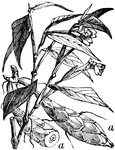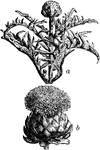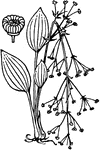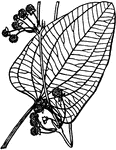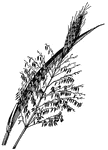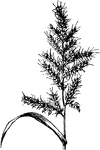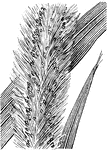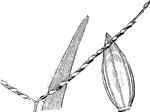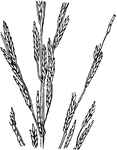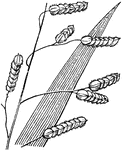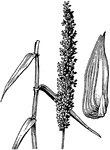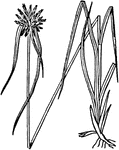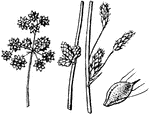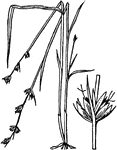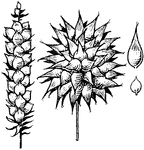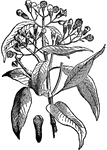
Cloves
"Cloves are a very pungent and aromatic spice, the dried flower-buds of a tree a native of the Molucca…

Coffee Plant
"Coffee is the seed of an evergreen shrub, which is cultivated in hot climates, and is a native of Abyssinia…
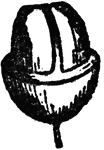
Coffee Bean
"Coffee is the seed of an evergreen shrub, which is cultivated in hot climates, and is a native of Abyssinia…

Coffee Bean
"Coffee is the seed of an evergreen shrub, which is cultivated in hot climates, and is a native of Abyssinia…
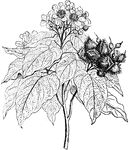
Arnotto
"Arnotto-extremely common in Jamaica and other parts of the West Indies, and has been introduced into…

Ascidium
"Ascidium of a Plant. Leaf of pitcher-plant (Nepenthes) with a winged petiole and terminating in an…
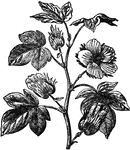
Cotton Plant
"Cotton is a vegetable hair or filament constituting the wing of the seed of the different species of…
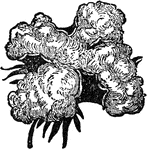
Cotton Flower
"Cotton is a vegetable hair or filament constituting the wing of the seed of the different species of…
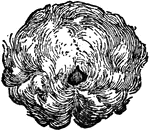
Cotton Flower
"Cotton is a vegetable hair or filament constituting the wing of the seed of the different species of…

Daffodil
"Daffodil is the popular name of a plant which is one of the earliest ornaments of our gardens, being…
Tripsacum
Inflourescences not expanded; the lower pistillate portion breaking up into bony, bead-like joints.
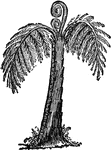
Giant Tree Fern
"The Fern is a leafy plant springing from a rhizome, which creeps below or on the surface of the ground…
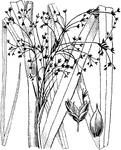
Cladium
Spikelets with the uppermost scale only enclosing an achene; our commonest species has saw-edged. cutting…
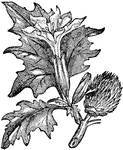
Thorn Apple
"Thorn Apple is a genus of plants. The common thorn apple is an annual plant, with smooth stem and leaves,…
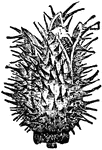
Thorn Apple Bud
"Thorn Apple is a genus of plants. The common thorn apple is an annual plant, with smooth stem and leaves,…
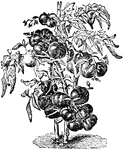
Tomato Plant
"Tomato, or Love Apple, is a plant of the natural order Solanaceæ. It is one of a genus of several…
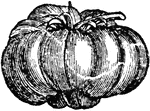
Tomato
"Tomato, or Love Apple, is a plant of the natural order Solanaceæ. It is one of a genus of several…

Tomato
"Tomato, or Love Apple, is a plant of the natural order Solanaceæ. It is one of a genus of several…

Double Tuberose
"Tuberose (Polianthus) is a genus of plants of the natural order Liliaceæ. The plant is in high…

Tussock Grass
"Tussock Grass is a large grass, same genus with the cock's-foot grass of the United States; native…

Valerian
"Valerian is an order of herbs or rarely shrubs belonging to the division of monopetalous dicotyledons…
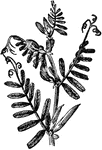
Vetch Plant
"Vetch, Fetch, Fitch, and Tare are terms variously used to indicate the fodder plant. This genus consists…

Vetch Seed Pod
"Vetch, Fetch, Fitch, and Tare are terms variously used to indicate the fodder plant. This genus consists…

Viper's Bugloss
"Viper's Bugloss is a genus of plants. The species are large herbaceous plants or shrubs, rough with…

White Water Lily
"The Water Lily is an exogenous aquatic plant including eight genera, and all possessing submerged root…
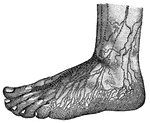
Superficial Lymphatics of the foot
"In nearly every tissue of the body there is a marvelous network of vessels, precisely like the lacteals,…

Lady's Slipper
"Lady's Slipper is a genus of plants. The genus is remarkable for the large inflated lip of the corolla.…
